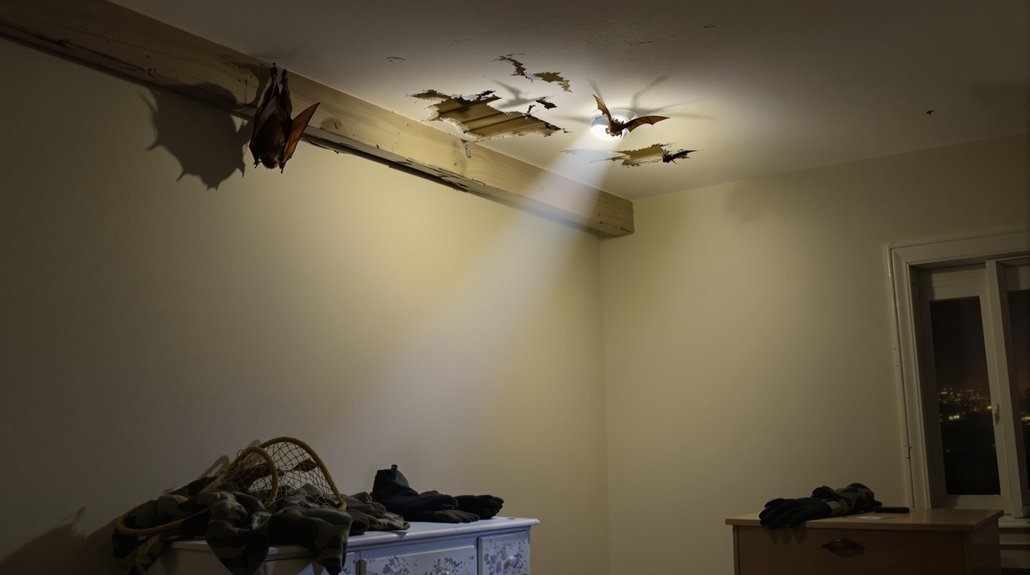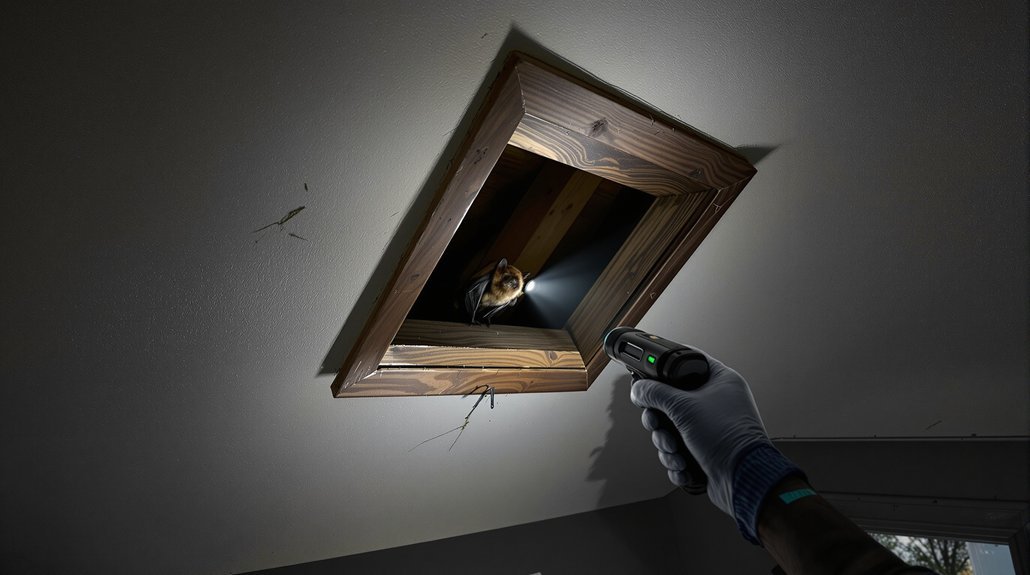To verify a room for bats in Des Moines, look for bat droppings or stains on walls and ceilings. Listen for noises like squeaking at night. Inspect areas behind furniture and in dark corners. Use a flashlight to find hidden spots. Look for small openings around windows, vents, and chimneys that bats could use to enter. Thorough checks indoors and outdoors are important. There are more detailed steps to ensure your space is bat-free.
Key Article Highlights
- Look for bat droppings (guano) in corners or near entry points, indicating possible infestation.
- Listen for nocturnal sounds like squeaking or scratching, especially during evening hours.
- Inspect hidden areas behind furniture, in attics, and dark corners for signs of bats or droppings.
- Use a flashlight to examine dark spaces where bats may roost and check for stains from urine or oil.
- Check for small openings around windows, vents, and chimneys that could allow bats to enter the room.
How to Identify Bats in Your Home

As homeowners in Des Moines become more aware of potential wildlife intrusions, checking a room for bats has become an important task. Bats can enter homes through small openings, and knowing how to identify these bat entry points is vital. Homeowners must be vigilant about inspecting their living spaces, especially in areas where bats are known to roost.
Homeowners in Des Moines should check for bats, as these creatures can enter through small openings and roost in hidden areas.
When checking a room for bats, the first step is to look for any visible signs of an infestation. Droppings, also known as guano, are a common indicator of bat presence. These droppings can accumulate near entry points or in corners of the room. Homeowners should also look for stains on walls or ceilings. These stains may be a result of bat urine or oil from their fur. Both signs indicate that bats may have made their way into the home.
Next, it is important to examine the room for potential bat entry points. Bats can fit through very small openings, sometimes as small as a quarter of an inch. Homeowners should inspect windows, chimneys, vents, and any gaps around pipes or wires. Even small cracks in walls can serve as an entry point. Ensuring that these areas are sealed can help prevent bats from entering a home. Recognizing entry points is essential for effective exclusion.
Another method to check for bats is to listen for sounds that may suggest their presence. Bats are nocturnal, so homeowners should be attentive during the evening hours. Sounds like squeaking or scratching can be signs of bats roosting in hidden areas. If these noises are heard, it may indicate that further investigation is needed.
In addition to visual and auditory checks, using a flashlight can help illuminate dark corners and hidden spaces. Bats prefer dark areas to roost, so checking behind furniture or in attics can be beneficial. These areas may reveal more signs of infestation or even the bats themselves.
A thorough inspection also involves checking for possible entry points around the exterior of the home, as bats often use these to access interior spaces.

